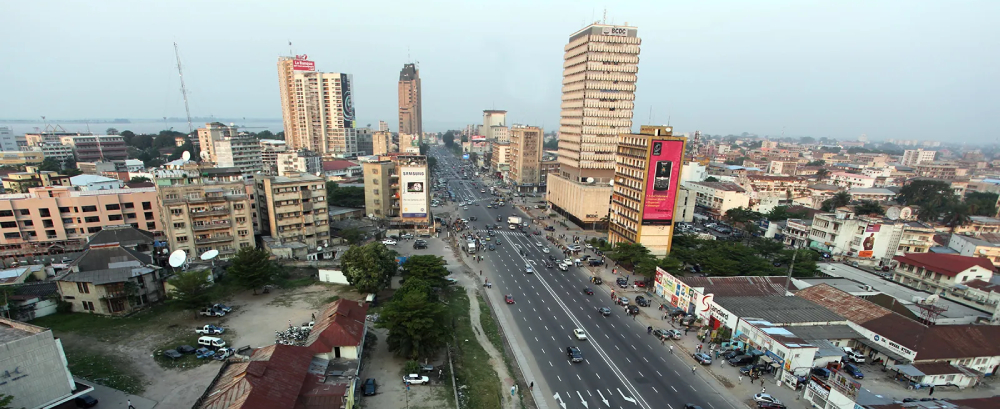
The Republic of Congo
April 12, 2025
São Tomé and Príncipe
April 12, 2025The Democratic Republic of Congo (DRC), also known as Congo-Kinshasa, is one of the most resource-rich countries in the world, particularly in terms of mineral wealth. The country is endowed with a vast array of minerals that are critical to global industries, including technology, energy, and manufacturing. Here’s an overview of the key mineral resources in the Democratic Republic of Congo:
Key Mineral Resources
- Cobalt:
- Overview: The DRC is the world’s largest producer of cobalt, which is a critical mineral for the production of batteries, particularly for electric vehicles. Cobalt mining is primarily concentrated in the southern part of the country, especially in the Katanga region.
- Major Mining Areas: The key cobalt-producing areas include Kolwezi, Likasi, and Lubumbashi.
- Reserves: The DRC holds over 60% of the world’s known cobalt reserves, making it a vital player in the global supply of this mineral.
- Copper:
- Overview: The DRC is also one of Africa’s largest producers of copper. The Katanga region is rich in copper deposits, and the country is among the top global producers.
- Major Mining Areas: Copper mining is concentrated in the Katanga Copperbelt, which includes cities like Lubumbashi, Kolwezi, and Likasi.
- Reserves: The DRC has vast copper reserves, and ongoing exploration and mining activities continue to uncover new deposits.
- Diamonds:
- Overview: The DRC is one of the world’s leading producers of diamonds, particularly industrial diamonds. Both alluvial and kimberlite diamond deposits are found in the country.
- Major Mining Areas: Significant diamond mining areas include Kasai-Oriental, Kasai-Occidental, and the Tshikapa region.
- Reserves: The DRC has extensive diamond reserves, with the potential for further discoveries. The sector is dominated by artisanal and small-scale mining, though there are also large-scale operations.
- Coltan (Columbite-Tantalite):
- Overview: The DRC is a leading producer of coltan, a key mineral used in the production of tantalum capacitors, which are essential components in electronic devices like smartphones and laptops.
- Major Mining Areas: Coltan mining is concentrated in the eastern provinces, particularly in North Kivu, South Kivu, and Maniema.
- Reserves: The DRC holds a significant portion of the world’s coltan reserves, making it a crucial supplier to the electronics industry.
- Gold:
- Overview: Gold mining is an important sector in the DRC, with both artisanal and large-scale operations contributing to the country’s economy.
- Major Mining Areas: Key gold-producing areas include the provinces of Ituri, South Kivu, and Haut-Uélé.
- Reserves: The gold reserves in the DRC are substantial, and the country is one of Africa’s largest gold producers. The sector, however, is often marred by illegal mining and conflict.
- Tin:
- Overview: Tin mining is another significant industry in the DRC, particularly in the eastern provinces. The mineral is primarily extracted from cassiterite ore.
- Major Mining Areas: Tin mining is concentrated in the provinces of North Kivu, South Kivu, and Maniema.
- Reserves: The tin reserves in the DRC are considerable, with the country being a leading producer of tin in Africa.
- Tungsten:
- Overview: Tungsten, extracted from wolframite ore, is another important mineral found in the DRC. It is primarily used in industrial applications.
- Major Mining Areas: Tungsten mining occurs in the eastern provinces, alongside tin and coltan.
- Reserves: The tungsten reserves in the DRC are significant, contributing to the country’s mineral wealth.
- Zinc:
- Overview: The DRC has zinc deposits, particularly in the southeastern region near the copper and cobalt mines.
- Reserves: The zinc reserves are still being explored, with the potential for further development.
- Manganese:
- Overview: Manganese deposits have been identified in the DRC, particularly in the southeastern regions. Manganese is critical for steel production.
- Reserves: The manganese reserves in the DRC are still under exploration, with potential for significant production.
Investment and Extraction Situation
- Mineral Wealth and Global Importance: The DRC’s mineral wealth makes it one of the most important countries in the global supply chain for critical minerals like cobalt, copper, and coltan. These minerals are essential for the technology, automotive, and energy industries.
- Challenges and Opportunities: The mining sector in the DRC faces significant challenges, including political instability, inadequate infrastructure, corruption, and the presence of armed groups in mining regions. Despite these challenges, the sector offers substantial opportunities for investment, particularly as global demand for minerals like cobalt and coltan continues to rise.
- Artisanal and Small-Scale Mining (ASM): ASM is prevalent in the DRC, especially in the production of gold, diamonds, and coltan. While ASM is a vital source of income for many Congolese, it is often associated with environmental degradation, child labor, and funding of armed conflict. Efforts are ongoing to formalize and regulate ASM activities to improve safety, environmental standards, and economic benefits.
- Environmental and Social Impact: Mining activities in the DRC have significant environmental and social impacts, including deforestation, water pollution, and displacement of communities. The government and international organizations are working to address these issues through better regulation and community engagement.


